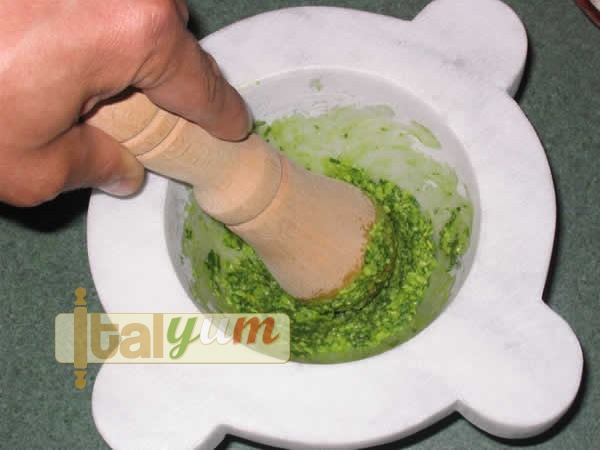
Pesto using pestle and mortar (Pesto alla genovese for the purists!)
Despite having already published a detailed "pesto recipe" recipe (using a blender), featured in the vegetable section of the website, this time I have decided to give it a go using pestle and mortar. Pestle and mortar is my favourite method because I can "feel" the ingredients. When making pesto, there is no fixed rule telling you exactly how much of this and how much of that; every time is a bit different because basil leaves are not always the same size and flavour and the cheese (especially the Pecorino cheese) can be different in taste depending of the area it comes from and how mature it is. Furthermore, depending on the olive oil you are using, you can have different final results. With the pestle and mortar method I can feel the mixture, I can taste it and decide to correct the taste during the process; choosing the right amount of garlic or dosing the cheese until the pesto gets the colour and taste I like. Furthermore, have you ever tried making pesto with you kids? Using pestle and mortar is the best way to involve them in the art of cooking and they will enjoy it and after having prepared it, you can coat the pasta or even spread the pesto sauce onto crusty country bread slices as midafternoon snack.Note: for simplicity, this time I show the method of preparing pesto using only one kind of cheese and my choice falls on the Pecorino Sardo cheese (from Sardinia region of Italy) because I believe that in the past people from Liguria regionof Italy had access more to this kind of cheese than to Pecorino Romano or Parmesan cheese. However, if you have difficulties to find Pecorino Sardo, then use Parmesan cheese.
Clicking on equipment pictures takes you to Amazon where you can buy the items. We get a small revenue share of anything you buy which helps keep the site running.
Ingredients
- 20 grams (3/4 oz) Basil leaves (it's about 20 large leaves)
- 1 Small clove of garlic (roughly chopped)
- 20 grams (3/4 oz) Pine nuts
- 40 grams (1 1/2 oz) Freshly grated Pecorino Sardo cheese
- 60 ml (2 fl oz) Extra virgin olive oil (absolutely no sunflower oil!)
- A pinch of coarse salt (1/2 tsp)
Instructions
- Gently wash the basil leaves, paying attention not to crunch them.
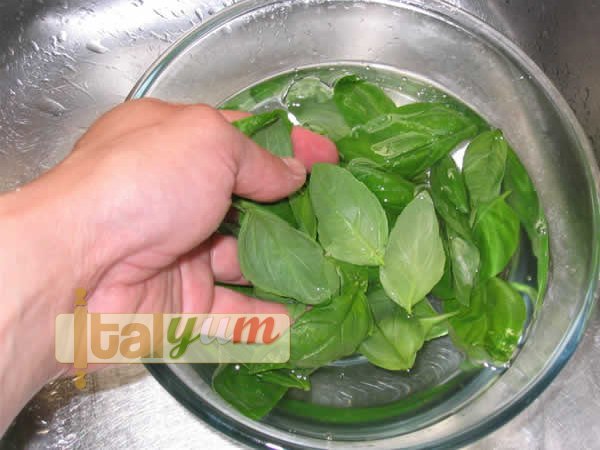
- Lay the basil leaves onto kitchen paper and let them to dry. DO NOT press or pat the leaves with kitchen paper but leave them to dry naturally.

- Add the basil leaves into the mortar.
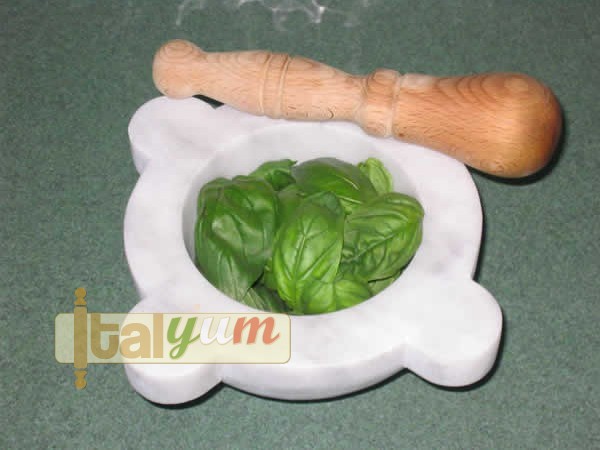
- Add the pine nuts into the mortar.
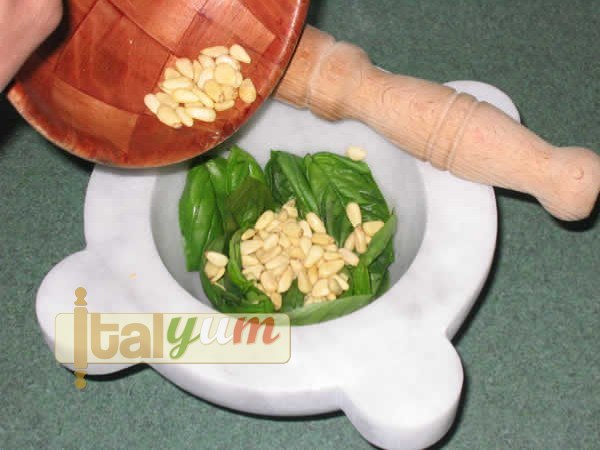
- Add the garlic (roughly chopped) into the mortar.
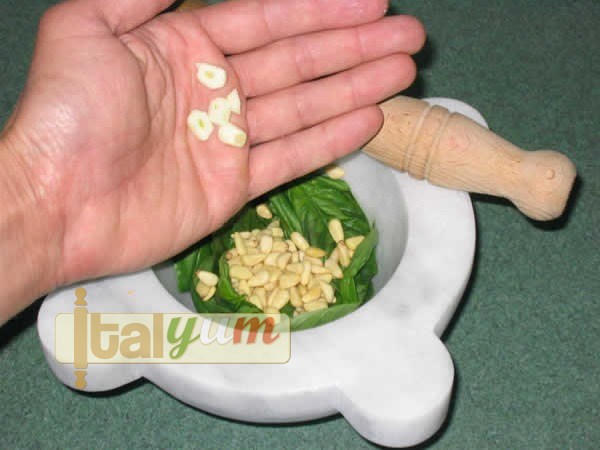
- Add the salt into the mortar.
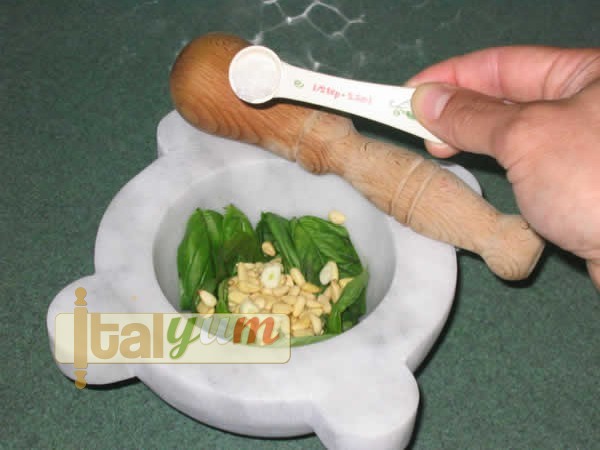
- Start working with the pestle, pressing and rotating it. Keep going for a few minutes until all the ingredients are finely ground.
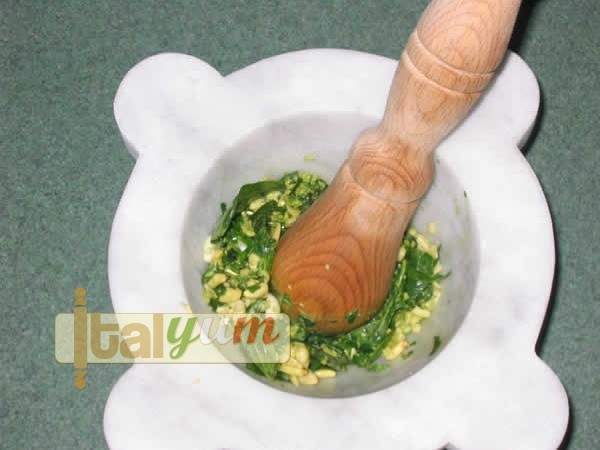
- The more you work the mixture with the pestle the better.
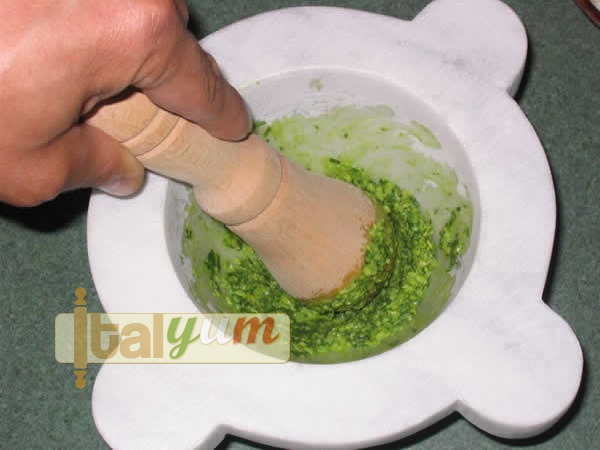
- After a few minutes working with the pestle, add the cheese and…
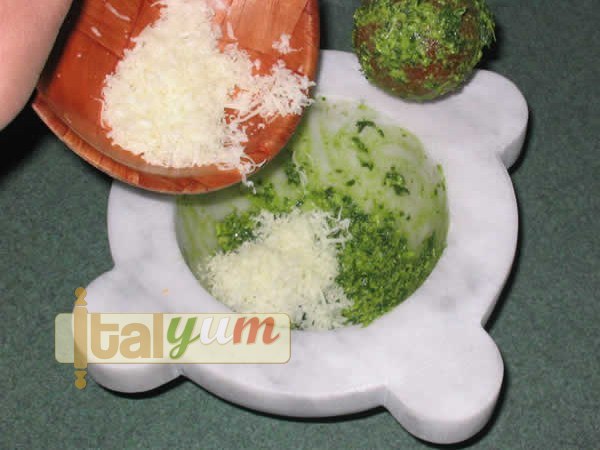
- …continue to work the mixture with the pestle until you have an evenly distributed light green colour.
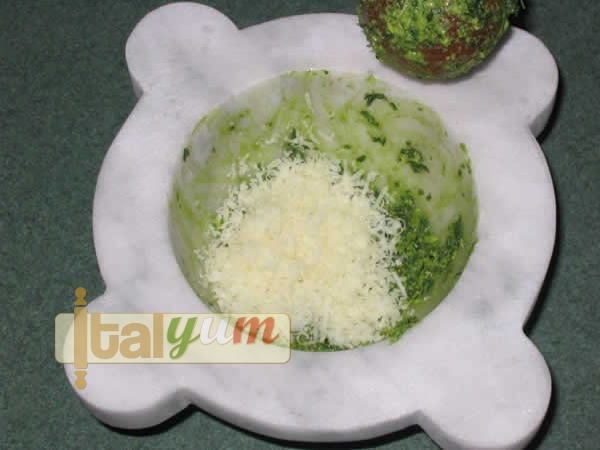
- Now, add the olive oil.
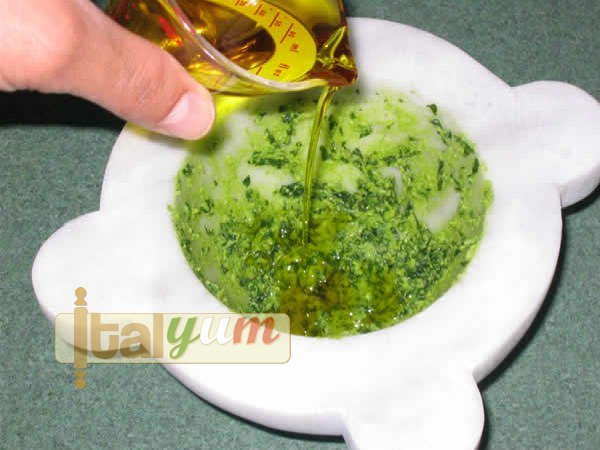
- Use a small spoon to stir so that the olive oil is evenly distributed.
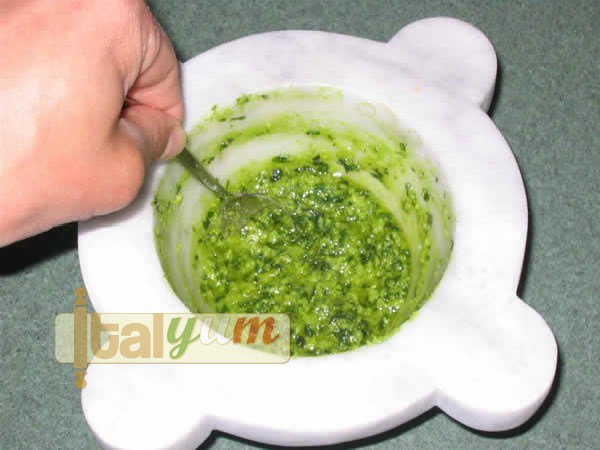
- This is the final result. Now you can coat spaghetti with it or spread it onto bread slices.
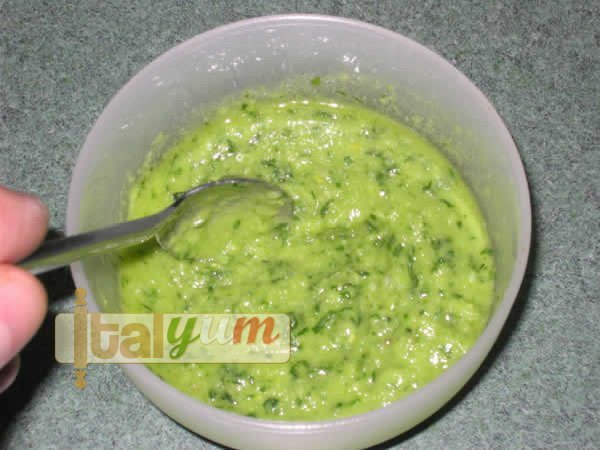
Nutrition
Calories: 650kcal
Tried this recipe?Let us know how it was!



